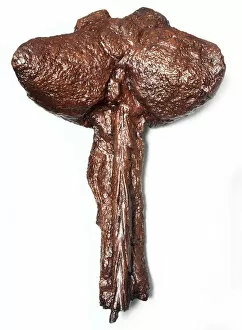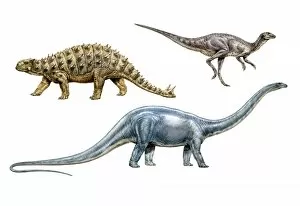Ankylosauridae Collection
Ankylosauridae, the fascinating family of armored dinosaurs, captivates us with their unique features and impressive defenses
All Professionally Made to Order for Quick Shipping
Ankylosauridae, the fascinating family of armored dinosaurs, captivates us with their unique features and impressive defenses. One prominent member of this group is Euoplocephalus, known for its iconic tail club. With a heavy bony knob at the end of its tail, Euoplocephalus could deliver powerful blows to fend off predators. The Ankylosauridae family thrived during the Late Cretaceous period, roaming the Earth millions of years ago. Their heavily armored bodies were covered in thick plates called osteoderms that acted as a protective shield against potential threats. One well-known representative of this family is Ankylosaurus, which boasted an extensive armor arrangement from head to tail. Its body was adorned with rows of bony plates and even featured large spikes protruding from its sides for added defense. Through fossilized remains and artistic interpretations, we can visualize these incredible creatures. The skeletal reconstructions showcase their robust frames and emphasize their distinctive characteristics such as the massive tail club or intricate bone structures. Euoplocephalus cutleri stands out among other members due to its remarkable preservation in fossil records. This particular species has provided valuable insights into the anatomy and behavior of these ancient reptiles. Today, paleontologists continue to study Ankylosauridae fossils meticulously in order to unravel more secrets about their lives on our planet millions of years ago. These captivating creatures have left an indelible mark on history through their formidable presence and intriguing adaptations that allowed them to thrive amidst fierce competition in prehistoric ecosystems.










